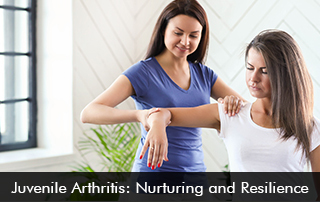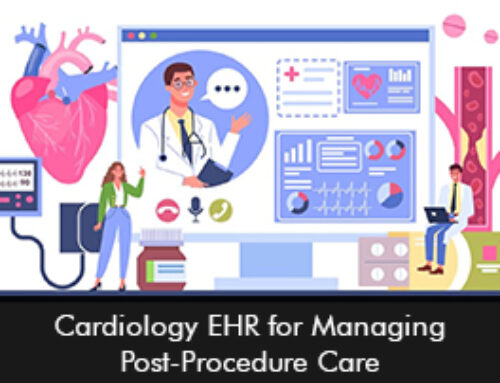Developing the resilience and strength of persons affected by juvenile arthritis depends on spreading knowledge about the condition and offering assistance. We can enable kids, teenagers, and their families to face the challenges of juvenile arthritis with fortitude, resilience, and a feeling of community by raising awareness, encouraging understanding, and providing resources and support networks. Let’s work together to create a world in which every kid with juvenile arthritis can flourish, lead a meaningful life, and realize their full potential.
Understanding Juvenile Arthritis:
Children and teenagers with juvenile arthritis suffer from a chronic autoimmune disease that presents special problems that call for more education and assistance. Throughout this process, it is crucial to nurture the resilience and strength of people with juvenile arthritis and their families. This blog will discuss how to assist those who are impacted by juvenile arthritis, the impacts of the condition, and the importance of raising awareness.
Types of Juvenile Arthritis:
There are six types of Juvenile Arthritis.
- Juvenile Idiopathic Arthritis (JIA):
- Juvenile Rheumatoid Arthritis (JRA):
- Systemic Juvenile Idiopathic Arthritis (SJIA):
- Enthesitis-Related Arthritis (ERA):
- Psoriatic Arthritis (PsA):
- Undifferentiated Arthritis (UA):
Juvenile Idiopathic Arthritis (JIA):
This type of juvenile arthritis is the most prevalent and is characterized by persistent joint inflammation in children under the age of 16 that lasts at least six weeks. Oligoarthritis, polyarthritis, systemic arthritis, enthesitis-related arthritis, psoriasis arthritis, and undifferentiated arthritis are some of the additional subtypes of JIA.
Juvenile Rheumatoid Arthritis (JRA):
This phrase, which was once used synonymously with JIA, is now regarded as archaic. JIA cases diagnosed before the age of 16 that display symptoms resembling those of adult rheumatoid arthritis are sometimes referred to as JRA.
Systemic Juvenile Idiopathic Arthritis (SJIA):
A form of JIA known as SJIA is characterized by arthritis as well as systemic signs like fever, rash, and internal organ inflammation. Complications including macrophage activation syndrome (MAS), a serious systemic inflammatory reaction, could result from it.
Enthesitis-Related Arthritis (ERA):
The entheses, which are the places where tendons and ligaments join to bones, are the main areas affected by this kind of juvenile arthritis. ERA frequently impacts the lower limbs and is frequently accompanied by inflammation in the entheses, joints, and axial skeleton.
Psoriasis Arthritis (PsA):
Children who also have psoriasis, a skin ailment marked by red, scaly areas, may develop psoriasis arthritis. It frequently impacts the joints and nails and might resemble adult psoriasis arthritis in some ways.
Undifferentiated Arthritis (UA):
When the criteria for various sub-types of juvenile arthritis are met or when the symptoms of juvenile arthritis do not fit into any one sub-type, UA is diagnosed. As the illness worsens and more precise symptoms appear, the diagnosis might be improved with time. Highlighting the various types of childhood arthritis, such as juvenile idiopathic arthritis (JIA) and associated diseases.
The Impact on Children and Families:
1. Physical and Emotional Toll:
Examining the impact of juvenile arthritis on a child’s daily life, including movement restrictions, pain management, and emotional health.
2. Educational Challenges:
Addressing the effects on education, social connections, and the significance of promoting inclusiveness and understanding.
3. Family Support:
Emphasizing the role of family members as caregivers, advocates, and sources of emotional support for children with juvenile arthritis.
Raising Awareness:
1. National Juvenile Arthritis Awareness Month:
Discussing the significance of July as the designated month for raising awareness about juvenile arthritis.
2. Educational Campaigns:
Highlighting the importance of spreading knowledge about juvenile arthritis through online and offline campaigns, workshops, and community events.
3.Collaboration with Healthcare Providers:
Encouraging healthcare professionals to actively educate their communities about juvenile arthritis and the available resources for support.
Providing Support:
1. Patient Support Organizations:
Showcasing national and local organizations dedicated to supporting individuals with juvenile arthritis and their families, providing resources, advocacy, and community networks.
2. Therapeutic Approaches:
Discussing the various treatment options, including medication, physical therapy, occupational therapy, and emotional support services.
3. Parent and Caregiver Support:
Emphasizing the need for support networks and resources for parents and caregivers, including counseling services and peer support groups.
Empowering Individuals:
-
Self-Management and Empowerment:
Encouraging children and teenagers with juvenile arthritis to take an active role in managing their condition, promoting self-advocacy and self-care practices.
-
Education and Transition to Adulthood:
Addressing the unique challenges faced by teenagers transitioning to adult care and highlighting the importance of empowering them with the knowledge and skills necessary for self-management.







